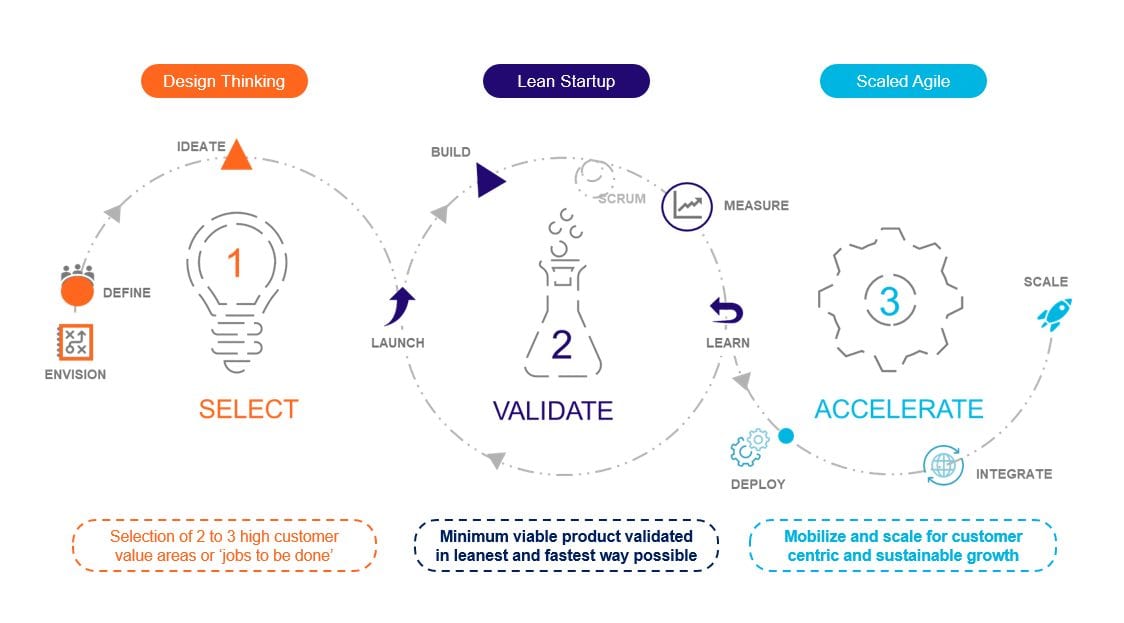Our website is not supported on this browser
The browser you are using (Internet Explorer) cannot display our content.
Please come back on a more recent browser to have the best experience possible

Though there are wildly divergent reports of the growth and impact of Artificial Intelligence (AI) and Robotics on the human workforce, the Oxford Future of Employment study suggests that up to 47% of US jobs could be automated in the coming decades, with the Robotic Process Automation (RPA) market predicted to grow by 60.5% by 2020.
Such growth and scale of opportunity to implement AI technology has left financial services companies struggling to know which projects to select. The current majority view of shareholders is that cutting costs is key for global banks to drive profit growth, limiting the amount of money available to cover both traditional “keep the lights on” IT projects and transformational AI projects.
This conflict between available resources and the need to stay ahead of the digital curve established by competitors and start-ups, forms a business landscape in which the ability of companies to be innovative in project selection and Agile in delivery of their portfolio, is a strong determinant of success.
The key focus area for rolling out RPA to date has been in Back Office Operations. Examples include implementing RPA to replace repetitive tasks such as data requests from external auditors and correcting formatting and data mistakes in requests for funds transfers.
This means that repetitive manual activities in Operations could be automated in a much shorter time than previously thought possible, as smart bots work with legacy systems to deliver automation benefits quickly.
With so much growth opportunity for AI in banking, it would be easy to jump at the first opportunities that arise and attempt to roll-out the new technology as quickly as possible using standard in-house project management methodologies. However, MIGSO-PCUBED ’s experience working with clients on a full lifecycle approach, from ideation to embedding change, tells us to pause here.
Our approach, which we term ‘Enterprise Agility’, entails a number of methods, tools and templates to enable agility across any organisation by applying agile techniques to support PPM delivery.
We use our ‘Innovation Framework’ within large organisations to support innovation by encouraging entrepreneurial behaviour. Recently, we applied this framework within a major automotive company to help the CEO filter and select high impact initiatives to fund. The initiatives selected received initial funding and then had to quickly demonstrate their value. If those individual initiatives failed to show their value, funding could be easily re-apportioned to a competing idea.

The SELECT and VALIDATE phases of MIGSO-PCUBED ’s Innovation Framework (pictured above) are centered around project design and selection. MIGSO-PCUBED have developed a set of tools and techniques to ensure that the most innovative technologies and approaches are selected for implementation in the areas associated with the highest future revenue and/or cost efficiency potential.
Once project selection has been validated, we move onto the ACCELERATE phase. Here, technology is deployed, integrated and scaled as quickly as possible.
Depending on the scale of the roll-out and the specific needs of each client, the focus for implementation could be on a traditional Agile approach, or Agile at Scale for larger implementations using the Scaled Agile Framework (SAFe).
Regardless of which approach is followed, you can expect to see the following key features of a MIGSO-PCUBED Agile approach:
Many Financial Services clients have a large portfolio of potential RPA projects however due to time constraints and limited capital budgets, leave value on the table while their competitors streak ahead. MIGSO-PCUBED can work with you in selecting, validating and accelerating your project delivery to ensure you stay ahead of the AI curve.
This article was written by Sam Jones.
Loved what you just read?
Let's stay in touch.
No spam, only great things to read in our newsletter.
We combine our expertise with a fine knowledge of the industry to deliver high-value project management services.
MIGSO-PCUBED is part of the ALTEN group.
Find us around the world
Australia – Canada – France – Germany – Italy – Mexico – Portugal – Romania – South East Asia – Spain – Switzerland – United Kingdom – United States
© 2024 MIGSO-PCUBED. All rights reserved | Legal information | Privacy Policy | Cookie Settings | Intranet
Choose your language
Our website is not supported on this browser
The browser you are using (Internet Explorer) cannot display our content.
Please come back on a more recent browser to have the best experience possible
